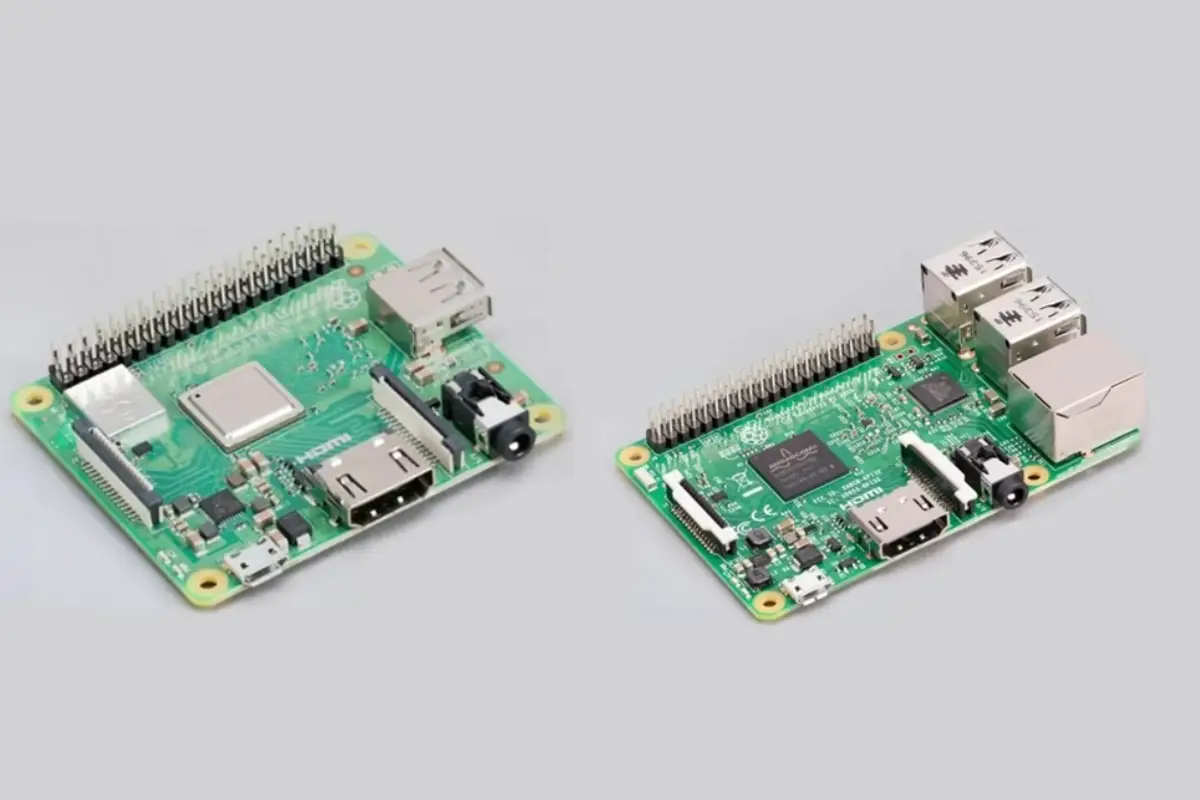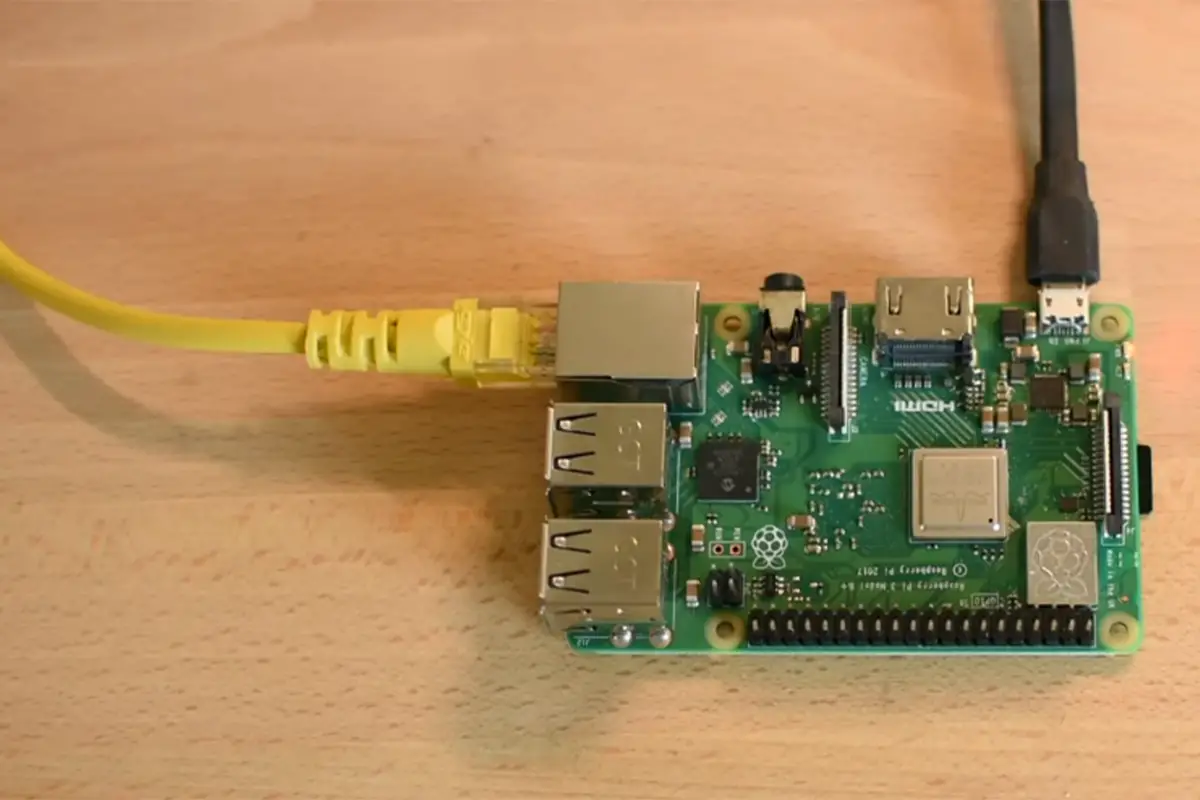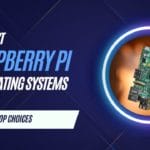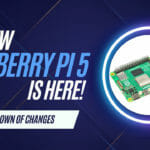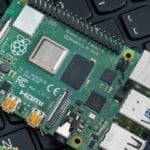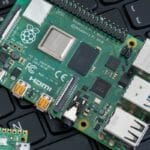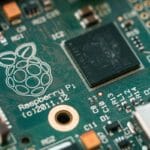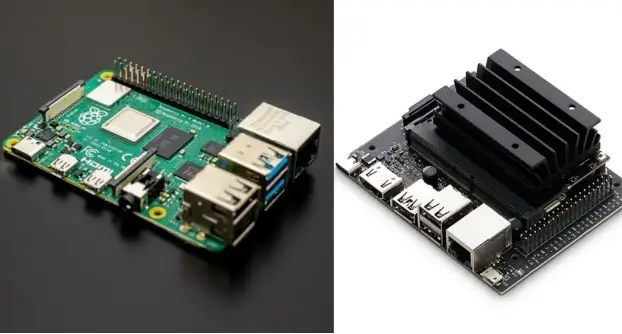
The Raspberry Pi and Jeston Nano are remarkable examples of single-board computers that pack the functionalities of a complete computer onto a single circuit board. These two models are among the most sought-after types of single-board computers due to their impressive computing capabilities.
To help single-board computer enthusiasts determine which of these products is ideal for them, this guide explores some of the key differences between the Raspberry Pi and Jetson Nano.
In this guide, we will analyze the similarities and differences between each board’s specifications. Our focus will be on key aspects such as price, processor, memory, ports, additional features, and popular operating systems available for both.
Let’s get to it.
Overview Of The Jetson Nano

Prior to the release of the Jetson Nano in March 2019, Nvidia had been manufacturing its own line of AI computers, which were often too expensive for maker projects.
However, with the introduction of the 2-GB and 4-GB developer kits, the Jetson Nano has become an affordable alternative and a popular competitor to the Raspberry Pi. Despite its compact size, the Jetson Nano boasts a comprehensive set of ports and 40 GPIO pins. As a result, it has gained popularity among makers and developers.
Some of the key features of the Jetson Nano include:
- A quad-core ARM Cortex-A57 CPU and a 128-core NVIDIA Maxwell GPU, which delivers up to 1 teraflops of processing power.
- It comes with 2GB or 4GB of LPDDR4 memory, which is sufficient to run complex machine learning algorithms and handle multiple sensors simultaneously.
- It boasts a full suite of ports, including HDMI, USB 3.0, USB 2.0, Ethernet, and a CSI camera connector. It also includes 40 GPIO pins and support for Wi-Fi and Bluetooth.
- The Jetson Nano supports popular AI frameworks, such as TensorFlow, PyTorch, Caffe, and MXNet, making it easy to develop and deploy AI models.
- It is compact in size and has a low power consumption, making it an ideal platform for creating intelligent robots, drones, and other autonomous devices.
Overview Of The Raspberry Pi

The Raspberry Pi is a popular single-board computer designed for educational and hobbyist projects. It is equipped with a Broadcom ARM processor, up to 8GB of RAM, and several ports and connectors, including HDMI, USB, Ethernet, and GPIO, making it a versatile platform for a wide range of projects.
The Raspberry Pi also supports various operating systems, including Raspbian, Ubuntu, and Windows 10 IoT Core, which allows for a broad range of programming languages and software applications. Due to its low cost, accessibility, and ease of use, the Raspberry Pi has become a favorite among hobbyists, educators, and makers alike.
The first generation of computers, known as the Raspberry Pi Model B, was released in 2012. Since then, there have been several models, including:
- Raspberry Pi Model B+
- Raspberry Pi 2
- Raspberry Pi 3 Model B+
- Raspberry Pi 400
- Raspberry Pi Zero
- Raspberry Pi Pico
Key features of the Raspberry Pi are:
- A Broadcom ARM processor, which comes in different models with varying clock speeds.
- It has up to 8GB of RAM, depending on the model, which is sufficient to run a wide range of applications
- The Raspberry Pi has several ports and connectors, including HDMI, USB 2.0, USB 3.0, Ethernet, and a 40-pin GPIO header. It also supports Wi-Fi and Bluetooth connectivity.
- With support for several operating systems, including Raspbian, Ubuntu, and Windows 10 IoT Core, the Raspberry Pi is extremely versatile for different applications.
- The Raspberry Pi is affordable and accessible, making it a popular choice for hobbyists, educators, and makers alike. It is also easy to use and set up, with a vast community of users providing support and resources.
Specifications Comparison
Now that you know a little more about the Jetson Nano and the Raspberry Pi 4 Model B, let’s take a look at the differences in tech specs between them.
Memory
One of the main differences is that the Raspberry Pi has increased versatility in terms of memory. There are four different versions available, ranging from 1GB to 8GB.
Generally, the Jetson Nano has 4GB of memory, though there is a 2GB version available.
Connectivity
Depending on the model, the Raspberry Pi comes with up to two USB 3.0 ports, two USB 2.0 ports, a USB C port for power, a 3.5-mm analog audio-video jack, two Micro-HDMI ports, Camera Serial Interface (CSI), 40 GPIO pins, and Display Serial Interface (DSI).
By contrast, the 4-GB Jetson Nano has four USB 3.0 ports, one USB 2.0 Micro-B port, two MIPI CSI-2 DPHY lanes, 40 GPIO pins, an HDMI 2.0 port, and a DisplayPort. The 2-GB model has one USB 3.0 port, two USB 2.0 ports, one USB 2.0 Micro-B port, a MIPI CSI-2 D-PHY lane, 40 GPIO pins, and an HDMI 2.0 port.

Processors
Another key difference between these two devices is that they utilize different processors. The CPU will impact the processing power of the single-board computer, making it a vital consideration.
The Raspberry Pi 4 is powered by a 1.5 GHz 64-bit quad-core ARM Cortex-A72. Meanwhile, the Jetson Nano runs on a quad-core ARM A57 @ 1.43 GHz CPU.
Price
In terms of price, the Raspberry Pi 4 Model B tends to be cheaper than the Jetson Nano. It’s worth noting that versions of the Raspberry Pi 4 with increased memory usually cost more than versions with less memory. As a result, 8GB versions of the Raspberry Pi 4 are often more costly than the Jetson Nano.
Not to mention, the prices of both the Jetson Nano and Raspberry Pi will fluctuate depending on the retailer.
Displays
Moreover, these two devices have different displays. One of the most loved features of the Raspberry Pi 4 is that it enables dual displays, allowing users to run two monitors simultaneously. This is thanks to the two micro-HDMI ports.
Meanwhile, the Jetson Nano can enable DisplayPort and HDMI 2.0. It’s worth noting that the display is more limited for the 2GB version, as it can only run HDMI.
Graphical Processing Unit
The graphics processing unit (GPU) is perhaps the most important factor to distinguish these two devices. The Jetson Nano uses a 128-core Maxwell GPU.
On the other hand, the Raspberry Pi 4 is powered by a Broadcom BCM2711 GPU. You’ll read more about why this matters below.
Operating Systems
There are several operating systems compatible with the Raspberry Pi 4, including Raspberry Pi OS (formerly Raspbian), Ubuntu, OSMC, and RetroPie. Third-party images can also be used.
Linux4Tegra is the official operating system for the Jetson Nano and is built on Ubuntu 18.04. It comes pre-installed on the included SD card image and is optimized for use with Nvidia hardware.
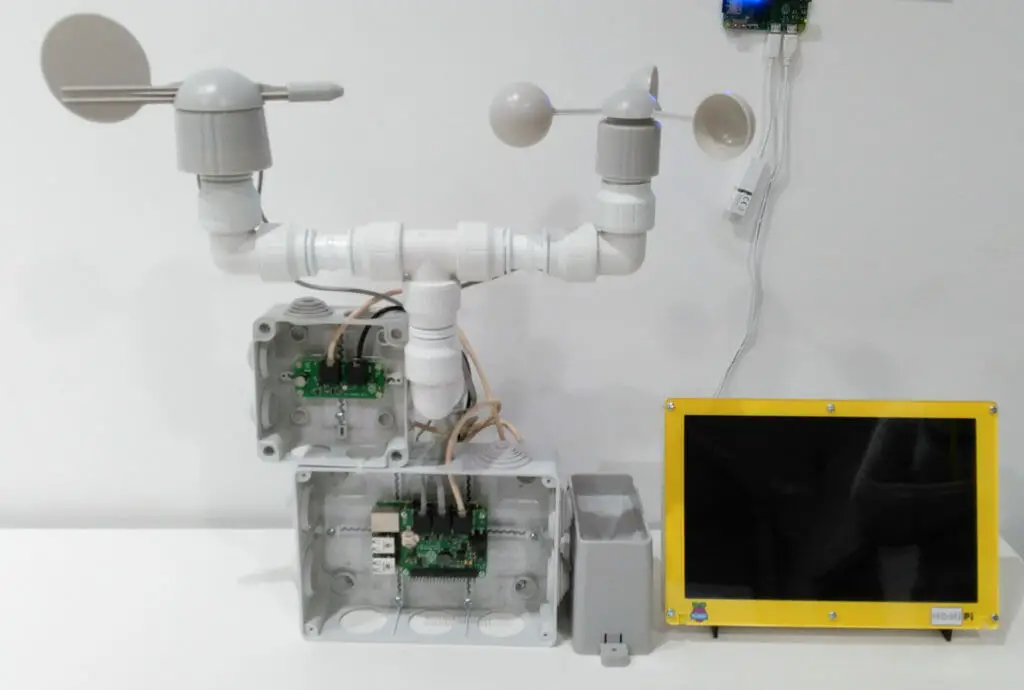
What Are The Similarities?
When you take a quick look at their specs, you’ll notice that the Raspberry Pi and Jetson Nano have a lot in common. They both come with 40 GPIO pins, Ethernet support, and run on Linux-based operating systems. In fact, you can even use Raspberry Pi accessories, like the Pimoroni Rainbow HAT, with the Jetson Nano by tinkering with some example scripts.
People have used both devices for different purposes like text editing, interfacing with sensors, and even building robots. But, the Jetson Nano is particularly great for robotics and autonomous vehicle applications, thanks to its compact size and powerful performance. You can see this in action with the JetBot. The Raspberry Pi is also popular in robotics projects, like the GoPiGo3.
In terms of software, both devices can run Ubuntu and popular apps like Chromium, LibreOffice, and Visual Studio Code. And, the Jetson Nano is working on adding retro gaming emulation support, which will make it even more comparable to the Raspberry Pi.
What About Their Differences?
The Raspberry Pi and Nvidia Jetson Nano have a lot of similar features, but one of the key differences is in their graphics processing units (GPUs). GPUs have been around since the early days of gaming, and today GPUs are highly valued in machine learning for their ability to process multiple tasks at once.
GPUs are the way to go if you want speedy machine learning. This is because the core of machine learning model training involves basic matrix math calculations that can be done in parallel for faster results.
When it comes to GPUs, the Jetson Nano has a 128-core Maxwell GPU running at 921 MHz, which is significantly more powerful than the Raspberry Pi 4. This makes the Jetson Nano a better choice for artificial intelligence and machine learning applications.
Raspberry Pi Vs Jetson Nano: Which Is Best For Me?
In truth, it’s hard to say which device comes out on top between the Raspberry Pi and the Jetson Nano. They both offer impressive features that can be a huge asset to users. To figure out which one is the best fit for you, you’ll want to compare their features, and intended use.
Typically, the Raspberry Pi is a great choice for beginners because it’s easy to use and there are plenty of resources available to help you learn. If you’re looking at exploring machine learning or AI, the Jetson Nano by Nvidia will probably be your best choice.

Final Thoughts
Both the Raspberry Pi and the Jetson Nano are fantastic devices that offer their own unique advantages. While they have a lot in common, they differ in key areas such as their GPUs and intended use. To choose the best option for your needs, it’s important to carefully consider their intended use.
The Raspberry Pi is easy to use and there is a very active online community with many resources available to help you learn. On the other hand, if you’re looking for a more powerful device with better graphics capabilities for AI and ML applications, the Jetson Nano might be a better fit.
Ultimately, both devices offer impressive features and can be used for a wide range of applications, from basic computing tasks to robotics and autonomous vehicles.
Check out this super handy comparison video by ExplainingComputers that dives into the similarities and differences some more, and he even includes some benchmark testing! As always, our FAQ section is just after the video. Check it out for answers to some of the more common questions.
Frequently Asked Questions
What is the main difference between the Raspberry Pi 4 and Jetson Nano?
The biggest difference between the two devices is their graphics processing units (GPUs). The Jetson Nano has a more powerful 128-core Maxwell GPU compared to the Raspberry Pi 4’s Broadcom BCM2711 GPU.
Which Device Is Better For Beginners?
The Raspberry Pi is generally better suited for beginners due to its ease of use and the abundance of resources available to help you learn.
Which One Is Better For Machine Learning Applications?
The Jetson Nano is more suitable for ML and AI applications thanks to its more powerful GPU which accelerates the processing of the math calculations used in machine learning and AI.
Which Device Is Cheaper?
The Raspberry Pi is usually cheaper than the Jetson Nano, depending on which model is chosen, However, price isn’t the most important factor when choosing between them, it’s important to consider the features and capabilities of each device when making a purchase decision.
- How To Uninstall Packages On Ubuntu - March 13, 2024
- How To Restart Ubuntu Using The Terminal - March 13, 2024
- What Is The Steam Deck | Experience Modern Handheld Gaming - March 12, 2024

